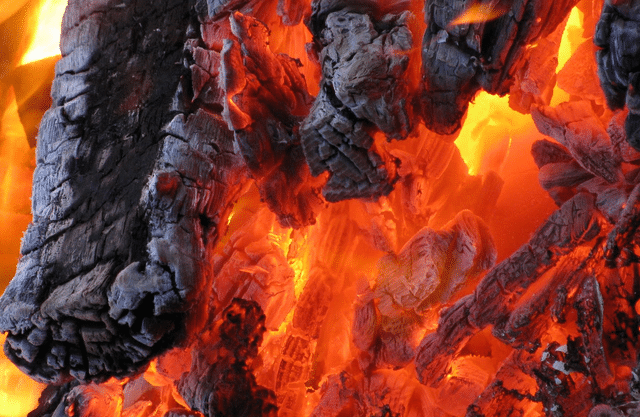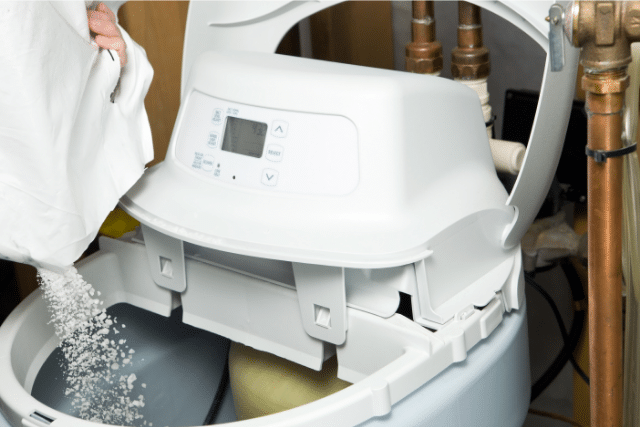How Does A Hot Water Tank Work
How Does A Hot Water Tank Work
The hot water tank we are referring to in this article is actually the tank that is used by a water heater to reserve hot water. These hot water tanks are cylindrical in shape and can contain up to 40 to 65-liter water. The tanks are usually made with thermal insulating materials to keep the water hot for a long time. Also, the thermal insulator body speeds up the heating progress as it hardly lets in or out any heat. Among the various types of insulators, fiberglass is the most popular one, used in water heater tanks.

Hot Water Tank Types
Now you may wonder, a hot water tank only stores water. How can it have any types? The experts have categorized hot water tanks into two types depending on the location of the heating unit— direct and indirect. So, what is the difference between these two types?
READ: Best Water Softener For Apartments
The direct hot water tank has a heating unit inside the tank to heat up the water. On the other hand, the indirect hot water tank requires an external heating system to heat up the water such as a boiler or burner.
Experts have divided hot water tanks into two more types other than direct and indirect. These categories are based on the necessity of venting.
The hot water tanks that require venting are dependent on a cold water tank. This cold water tank stores cold or normal water and supplies the water to the hot water tank when there is a need to heat water. This supply process from one tank to another occurs due to the force of gravity, not water pressure.

The hot water tanks that do not require any venting get water supply directly from the source. This supply process from the source to the tank happens due to water pressure.
Unvented hot water tanks are more convenient than the vented hot water tanks but they cost more as well.
READ: Why Is My Tankless Water Heater Not Working
How does it Work Actually?
Now, come to the real question. How does a hot water tank work? Well, it is basic physics actually. The fuel used for heating water in a hot water tank is either gas or electricity. So, for your better understanding let’s discuss how an unvented direct hot water tank works.
There are mainly two pipelines that enter and exit from a hot water tank: Inlet— the connection between the tank and the water source, outlet— the connection between the tank and the points where hot water is supposed to reach.
How Does A Hot Water Storage Tank Work
 Now, as I have mentioned before the whole body is covered with insulating material. In a direct hot water tank, the heating unit (boiler or burner) is located inside the insulating body, though there is a partition between the water storage and the heating unit. That is to prevent the heating unit from getting in contact with water. The partition is made of a thermally conductive material that easily lets the heat pass to the water. For a gas water heater, the burner has connections with the supply line, shut-off valves, pressure relief valve, and gas burner controller to make the heating process easy, fast, and efficient. So, when you turn on the heater, you basically turn on the burner. Because of the heat-insulating body, the water heats up very quickly and this heating process or change of temperature happens due to convection, one of the basic thermal transfer processes. That is pretty much how a hot water tank works. Basic physics, see!
Now, as I have mentioned before the whole body is covered with insulating material. In a direct hot water tank, the heating unit (boiler or burner) is located inside the insulating body, though there is a partition between the water storage and the heating unit. That is to prevent the heating unit from getting in contact with water. The partition is made of a thermally conductive material that easily lets the heat pass to the water. For a gas water heater, the burner has connections with the supply line, shut-off valves, pressure relief valve, and gas burner controller to make the heating process easy, fast, and efficient. So, when you turn on the heater, you basically turn on the burner. Because of the heat-insulating body, the water heats up very quickly and this heating process or change of temperature happens due to convection, one of the basic thermal transfer processes. That is pretty much how a hot water tank works. Basic physics, see!
As both the burner and the cold water are together inside the insulated body, hypothetically, the system will only get heat and as long as the water is in the tank it will never get cold. But in reality, there is no such thing as an absolute insulator. So, if the hot water remains in the tank for a long time without being used, it will get cold after a day or two.
Which is better? The traditional tank-type or Tankless Water Heaters?
Tank-type and tankless both have their own advantages. Tankless water heaters are more eco-friendly than traditional tank-type water heaters. A tankless water heater does not receive water which decreases the amount of heat loss. They are smaller in size, so it saves a lot of space and you can install it anywhere in your house.
Tank-types heaters on the other hand are big in size. So you need a specific suitable place in your house to install one. As the tank reserves hot water, there can be a lot of complications there. If the source water is hard water, there is a big chance that the water tank will rust over time, and heat works as a catalyst in this kind of reaction.
But, if you are living in the northern countries, where temperature can get really low, below freezing, a tankless water heater will not be able to serve your purpose properly. Tankless water heaters are most suited for warm countries where winters are not that cold. On the other hand, you can you tank-type water heaters in any country of the world, though they might be a little less efficient. Then again, if you use an electric tank-type water heater and run it with solar energy, you will not have to worry about that. Also, if you are thinking about installing a whole house water heater, go for the tank-type.
READ: Best Under Sink Water Heater Reviews
Conclusion
Hopefully, this article will quench your questions and curiosity about how a hot water tank works. Tankless or tank-type does not matter, a water heater requires a lot of energy. If you are not using green energy, either way, you are doing harm to the environment. About 1.1 billion people do not have access to drinking water across the world. So, turn off your shower, taps after you finish using them, you green and safe energy. A little care and caution from you can make the world a better place for everybody.







One Comment